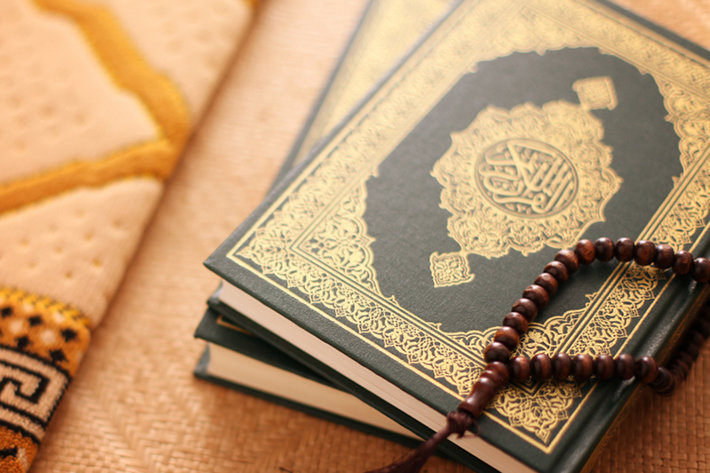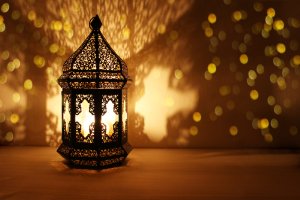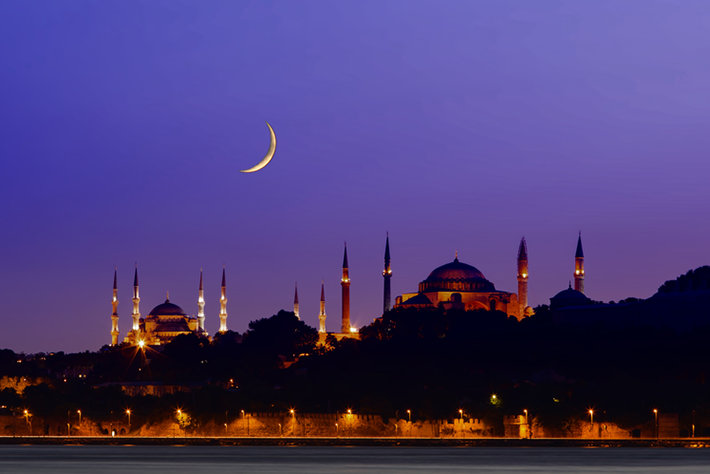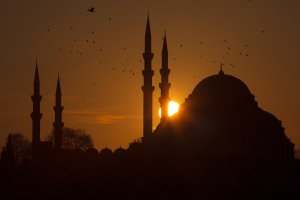Eid Mubarak!—Blessed Celebration!
Nearly 2 billion Muslims around the world are beginning the celebration of Eid al-Fitr marking the end of Ramadan. Depending on one’s location, the three-day holiday begins either tonight, May 1, or tomorrow.

Eid al-Fitr begins with the sighting of the first crescent moon in the month of Shawwal, the 10th month of the Islamic calendar. It follows and ends the holy month of fasting.
In honor of the holiday, we publish an excerpt from an article on the STAND website where Blogger Leland Thoburn shares a brief summary of the history and beliefs of Islam:
In the Bible, Abraham is said to have settled in Canaan (roughly equivalent to Israel today). There, he had two sons. The first, Ishmael, was born of Abraham and a handmaid, Hagar. The second, Isaac, was born of Abraham’s wife Sarah when she was 90 years old. Isaac grew to be the favored son, with Sarah casting Ishmael and Hagar out to wander the desert in search of a new home. Forty camel-ride days south of Canaan, Hagar and Ishmael arrived in a valley called Becca.
When Ishmael was still a young man, his father, Abraham, came to visit him. While there, Abraham dreamed that God commanded him to sacrifice his son. In the Bible, this story concerns Isaac. In Islam, Ishmael is the intended sacrifice. In both cultures, the story ends with God staying Abraham’s hand and providing a sheep to sacrifice instead. The celebration of Ishmael’s salvation is one of the holy days of Islam.
While there, God showed Abraham where to build an edifice, next to the well that had saved the life of his son. It was to be called the “Ka’bah,” or “Cube,” which was to be its shape. Its four corners pointed roughly to the four corners of the compass, but its most holy feature was a black stone, known as the celestial stone. Islamic lore relates that the stone descended from paradise whiter than milk, but that the sins of the sons of Adam made it black. An Angel brought the stone to Abraham, who set it in the east wall of the Ka’bah. (Some texts say that the Ka’bah predates humankind, that it was destroyed by the flood, and that Abraham’s effort was reconstruction rather than new construction; others trace the Ka’bah’s origins to Adam and Eve.)
For many centuries, the Ka’bah was revered by many peoples—Arab and Jewish alike—who, regardless of their faith, made regular pilgrimages to the site.
Becca became Makkah (Mecca), and Ishmael’s progeny became the Arabs, and eventually included Muhammad, the Prophet of Islam.
Muhammad was born in 570 CE.
In the beginning of the 7th century CE, the Ka’bah was being razed in order to build a bigger, better edifice. Several different tribes participated, but when it came time to re-set the black rock, each tribe wanted the honor. For days, disagreement raged, to the point where alliances were formed and preparations begun for battle. Before blood could be spilled, the oldest man present commanded that the dispute would be arbitrated by the next man who walked through the door. All waited anxiously until, finally, a man appeared.
It was Muhammad. Now in his 35th year, he had earned the nickname Al-Ameen, or “the truthful,” and had grown much respected throughout Makkah and beyond. His appearance brought a sigh of relief to the would-be combatants. Muhammad considered the situation, then laid out a cloth on the ground. On that cloth he placed the black rock. He then invited a representative of each tribe to take a corner of the cloth and lift the rock to its resting place in the new wall, whereupon Muhammad lifted the rock off the blanket and set it in its place. Talk of war dissolved, and the tribes returned to their work.
Soon after this, Muhammad began to feel the need for meditation. As was customary, he retreated to a cave in the hills above Makkah, where he devoted himself to reflection and thought. One day, the Angel Gabriel appeared and gave Muhammad his first revelation. Muhammad later described his revelations as coming in two forms. “Sometimes it cometh unto me like the reverberations of a bell, and that is the hardest upon me; the reverberations abate when I am aware of their message. And sometimes the angel taketh the form of a man and speaketh unto me, and I am aware of what he saith.”
Muhammad experienced his revelations over a 23-year period, sharing them (in the form of verses) with his followers. The Qur’an (which means “a reading or discourse”) is organized into 114 chapters (“surahs”), each of which is composed of between three and 286 verses (“ayahs”). These verses comprise the complete word of God, as delivered through his Prophet, Muhammad.
Ramadan is the month when Muhammad received this first revelation. It is marked by avoiding food, drink and intimate relations during the daytime hours, and immersing oneself spiritually for the entire month.
Eid-al-Fitr marks the end of the month of fasting.
From its beginnings, the Church of Scientology has recognized that freedom of religion is a fundamental human right. In a world where conflicts are often traceable to intolerance of others’ religious beliefs and practices, the Church has, for more than 50 years, made the preservation of religious liberty an overriding concern.
The Church publishes this blog to help create a better understanding of the freedom of religion and belief and provide news on religious freedom and issues affecting this freedom around the world.
The Founder of the Scientology religion is L. Ron Hubbard and Mr. David Miscavige is the religion’s ecclesiastical leader.
For more information visit the Scientology website or Scientology Network.


